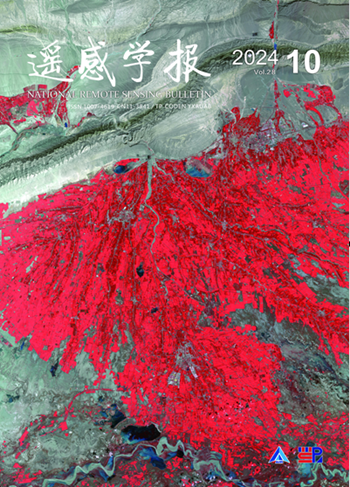一种从大气顶测量中检索光学浅水底深的便携式算法
引用次数: 14
摘要
光学浅水的底部深度(H)可以从多波段图像中检索,其中遥感反射率(Rs)通常用作输入。由于难以消除沿海地区的大气影响,通常情况下,卫星上没有有效的R来检索H。更重要的是,H的经验算法很难移植到新的测量中。在这项研究中,以陆地卫星8号和ICESat-2号的数据为例,我们提出了一种直接从大气层顶部(TOA)数据中检索H的方法。它不仅绕过了纠正气溶胶影响的要求,而且在算法开发中未包括的领域也显示出了很好的可移植性。具体而言,我们在443–2300中使用瑞利校正TOA反射率(ρrc) nm范围作为输入,以及多层感知器(MLPHρrc),用于检索H。ρrc和H(0–25)的匹配点超过78000个 m) 用于训练MLPHρrc,其导致8.8%的平均绝对百分比差(MARD)和0.96的决定系数(R2)。该MLPHρrc进一步应用于未包括在训练阶段的六个区域的Landsat-8数据,生成的MARD和R2值分别为8.3%和0.98。相反,以Rs为输入的传统双波段比值算法产生了31.6%和0.68的MARD和R2值,并且由于大气校正失败,H反演显著减少。这些结果表明MLPHρrc在光学浅水感测H方面的算法可移植性取得了突破。本文章由计算机程序翻译,如有差异,请以英文原文为准。
A Portable Algorithm to Retrieve Bottom Depth of Optically Shallow Waters from Top-Of-Atmosphere Measurements
Bottom depth (H) of optically shallow waters can be retrieved from multiband imagery, where remote sensing reflectance (Rrs) are commonly used as the input. Because of the difficulties of removing the atmospheric effects in coastal areas, quite often, there are no valid Rrs from satellites for the retrieval of H. More importantly, the empirical algorithms for H are hardly portable to new measurements. In this study, using data from Landsat-8 and ICESat-2 as examples, we present an approach to retrieve H directly from the top-of-atmosphere (TOA) data. It not only bypasses the requirement to correct the effects of aerosols but also shows promising portability to areas not included in algorithm development. Specifically, we use Rayleigh-corrected TOA reflectance (ρrc) in the 443–2300 nm range as input, along with a multilayer perceptron (MLPHρrc), for the retrieval of H. More than 78,000 matchup points of ρrc and H (0–25 m) were used to train MLPHρrc, which resulted in a Mean Absolute Percentage Difference (MARD) of 8.8% and a coefficient of determination (R2) of 0.96. This MLPHρrc was further applied to Landsat-8 data of six regions not included in the training phase, generating MARD and R2 values of 8.3% and 0.98, respectively. In contrast, a conventional two-band ratio algorithm with Rrs as the input generated MARD and R2 values of 31.6% and 0.68 and significantly fewer H retrievals due to failures in atmospheric correction. These results indicate a breakthrough of algorithm portability of MLPHρrc in sensing H of optically shallow waters.
求助全文
通过发布文献求助,成功后即可免费获取论文全文。
去求助
来源期刊

遥感学报
Social Sciences-Geography, Planning and Development
CiteScore
3.60
自引率
0.00%
发文量
3200
期刊介绍:
The predecessor of Journal of Remote Sensing is Remote Sensing of Environment, which was founded in 1986. It was born in the beginning of China's remote sensing career and is the first remote sensing journal that has grown up with the development of China's remote sensing career. Since its inception, the Journal of Remote Sensing has published a large number of the latest scientific research results in China and the results of nationally-supported research projects in the light of the priorities and needs of China's remote sensing endeavours at different times, playing a great role in the development of remote sensing science and technology and the cultivation of talents in China, and becoming the most influential academic journal in the field of remote sensing and geographic information science in China.
As the only national comprehensive academic journal in the field of remote sensing in China, Journal of Remote Sensing is dedicated to reporting the research reports, stage-by-stage research briefs and high-level reviews in the field of remote sensing and its related disciplines with international and domestic advanced level. It focuses on new concepts, results and progress in this field. It covers the basic theories of remote sensing, the development of remote sensing technology and the application of remote sensing in the fields of agriculture, forestry, hydrology, geology, mining, oceanography, mapping and other resource and environmental fields as well as in disaster monitoring, research on geographic information systems (GIS), and the integration of remote sensing with GIS and the Global Navigation Satellite System (GNSS) and its applications.
 求助内容:
求助内容: 应助结果提醒方式:
应助结果提醒方式:


